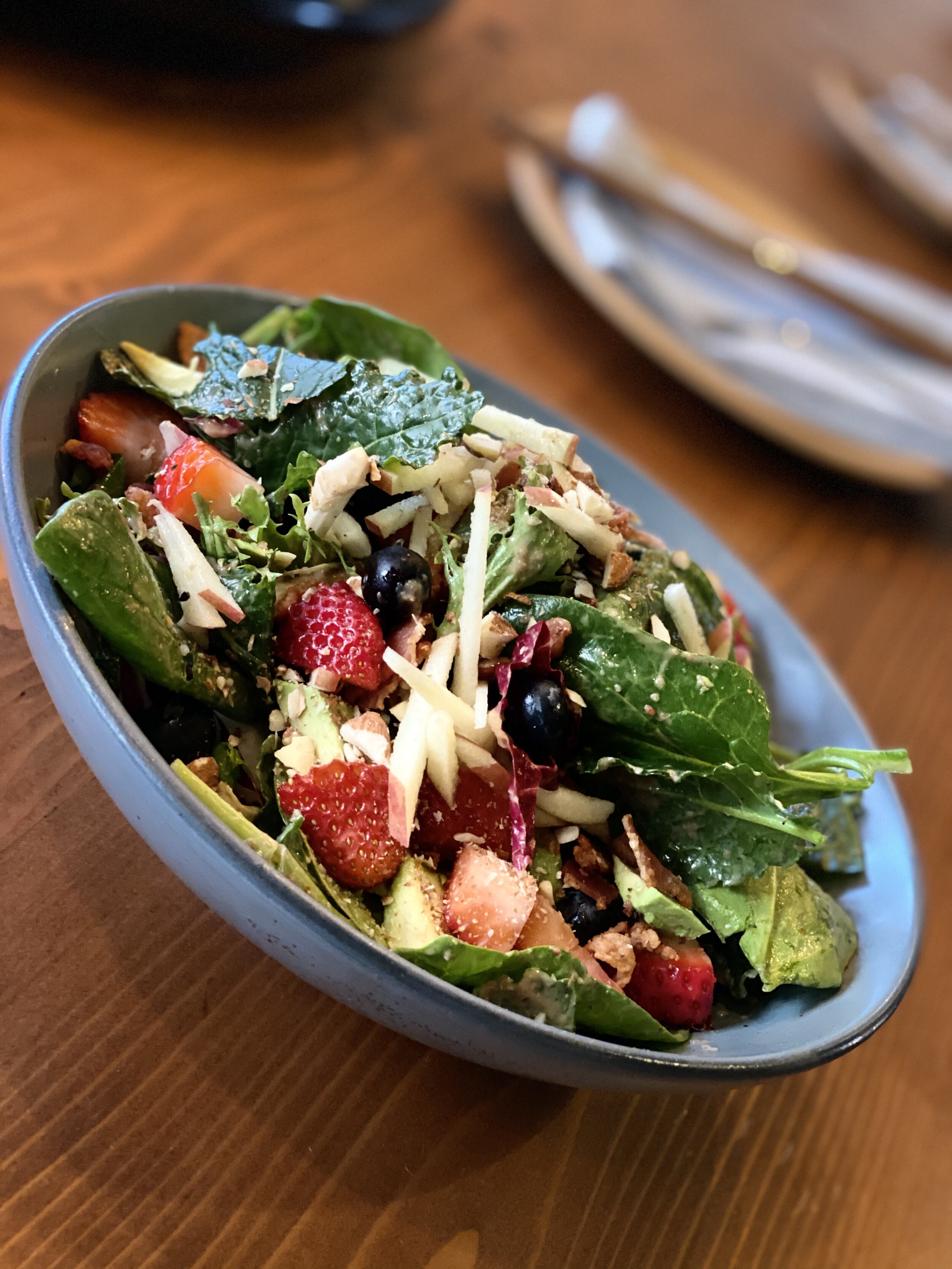First And Main Menu: Your Ultimate Guide To Navigating Restaurant Success
Imagine walking into a restaurant, flipping through the menu, and feeling completely overwhelmed. It’s not just about listing dishes—it’s about creating an experience. The first and main menu is where it all starts. It’s like the opening act of a show, setting the tone for what’s to come. So, whether you’re a restaurateur or just someone curious about the magic behind a menu, this guide will dive deep into the world of menu design, strategy, and execution.
Creating a first and main menu isn’t as simple as slapping together some dish names and prices. There’s a whole science behind it. From the psychology of how people read menus to the importance of pairing dishes with the right descriptions, every little detail matters. This article will break it down step by step so you can create a menu that not only looks good but also boosts your sales.
We’ll cover everything from the basics of menu design to advanced techniques that top restaurants use to keep customers coming back for more. If you’re ready to level up your menu game, stick around because we’re about to spill all the secrets!
Read also:Dumplings And More Escondido Your Goto Spot For Flavorful Asian Cuisine
Understanding the Concept of First and Main Menu
Let’s start with the basics. What exactly is a first and main menu? Think of it as the foundation of your dining experience. It’s the first thing your customers interact with when they sit down at your restaurant. A well-designed menu can make or break their perception of your establishment. It’s not just a list of food; it’s a storytelling tool that communicates your brand, values, and offerings.
Menus have evolved over time. Gone are the days of plain text listings. Today, menus are designed to be visually appealing, easy to read, and packed with information that helps customers make informed decisions. Whether you’re running a fine dining restaurant or a casual café, your menu should reflect your unique identity.
Here’s the deal: a good menu does more than just list items. It guides customers through their choices, highlights best-sellers, and even upsells premium options. By understanding the concept of the first and main menu, you’ll be better equipped to craft one that resonates with your audience.
Why the First and Main Menu Matters
Okay, so why should you care about your menu? Well, here’s the thing: your menu is one of the most powerful tools in your arsenal. It’s where you get to showcase your offerings, set expectations, and influence customer behavior. A poorly designed menu can confuse customers, lead to dissatisfaction, and even hurt your bottom line.
On the flip side, a well-thought-out menu can increase customer satisfaction, drive sales, and enhance the overall dining experience. It’s all about creating a seamless journey from the moment they open the menu to the time they place their order. Here are a few reasons why the first and main menu matters:
- It sets the tone for the dining experience.
- It highlights your best dishes and encourages upselling.
- It communicates your brand identity and values.
- It simplifies decision-making for customers.
- It helps manage inventory and reduce waste.
So, if you’re still treating your menu like an afterthought, it’s time to rethink your approach. Let’s dive deeper into how you can create a menu that works for you.
Read also:Charlestown Manor Beach And Campground The Ultimate Spot For Camping Enthusiasts
Designing the Perfect First and Main Menu
Designing a menu is more than just picking fonts and colors. It’s about creating a layout that’s both functional and visually appealing. The goal is to make it easy for customers to navigate while also showcasing your most profitable items. Here’s a breakdown of the key elements to consider:
1. Layout and Structure
Start with a clean and organized layout. Your menu should flow logically, guiding customers from appetizers to entrees to desserts. Use sections and subheadings to break up the content and make it easier to scan. For example:
- Starters
- Mains
- Sides
- Desserts
- Beverages
Make sure each section is clearly defined with headings and enough white space to prevent clutter. A well-structured menu helps customers focus on what’s important without feeling overwhelmed.
2. Typography and Fonts
Choosing the right font can make a big difference in how your menu is perceived. Avoid overly fancy or hard-to-read fonts. Stick to clean, modern typefaces that are easy on the eyes. Consider using different font sizes or weights to highlight key items or sections.
For example, you might use a bold font for section headings and a lighter font for dish descriptions. This creates a visual hierarchy that guides the reader’s eye through the menu.
3. Visual Elements
Don’t underestimate the power of visuals. Adding high-quality images or illustrations can enhance the appeal of your menu. Just be careful not to overdo it. Too many pictures can make the menu look cluttered and unprofessional.
If you decide to include images, make sure they’re high-resolution and relevant to the dishes. For instance, if you’re showcasing a signature dish, use a mouth-watering photo that makes it irresistible.
Psychology Behind Menu Design
Did you know that there’s a whole field of study dedicated to menu psychology? It’s all about understanding how people read and interact with menus. By leveraging these insights, you can design a menu that not only looks good but also drives sales.
1. The Golden Triangle
Research shows that people tend to read menus in a triangular pattern. They start at the top right, move to the top left, and then down to the center. This area is often referred to as the “Golden Triangle.” Placing your most profitable or signature dishes in this zone can increase their visibility and appeal.
2. Descriptive Language
The words you use to describe your dishes can have a huge impact on how they’re perceived. Instead of just listing ingredients, try adding vivid descriptions that evoke emotions. For example:
- Instead of “Grilled Chicken,” try “Juicy Grilled Chicken Breast with Smoky Herb Marinade.”
- Instead of “Salad,” try “Fresh Garden Salad with Crispy Lettuce, Cherry Tomatoes, and House-Made Dressing.”
These descriptions not only sound more appealing but also help differentiate your dishes from competitors.
3. Pricing Strategies
Pricing is another critical aspect of menu design. Avoid using dollar signs ($) as they can create a mental barrier for customers. Instead, use clean, rounded numbers or even price brackets to make it easier to compare options.
For example:
- Pasta Primavera – 12
- Steak Dinner – 25
Consider implementing pricing strategies like anchoring, where you place a higher-priced item next to a lower-priced one to make the latter seem like a better deal.
Best Practices for Creating a First and Main Menu
Now that we’ve covered the basics, let’s talk about some best practices for creating a menu that stands out. These tips will help you avoid common pitfalls and ensure your menu is both effective and engaging.
1. Keep It Simple
Less is more when it comes to menu design. Avoid cramming too many items onto one page. Instead, focus on offering a curated selection of dishes that align with your brand and target audience. This not only makes the menu easier to navigate but also helps streamline your kitchen operations.
2. Highlight Best-Sellers
Use visual cues like boxes, bold text, or icons to draw attention to your best-selling dishes. This encourages customers to try these items while also boosting your sales. For example:
- Our Signature Dish: Juicy Grilled Chicken Breast with Smoky Herb Marinade
- Customer Favorite: Fresh Garden Salad with Crispy Lettuce and House-Made Dressing
3. Test and Iterate
Menus aren’t set in stone. They should evolve over time based on customer feedback and sales data. Regularly review your menu to identify underperforming items and replace them with new offerings. This keeps your menu fresh and exciting while also maximizing profitability.
Trending Menu Ideas for 2024
Staying up-to-date with the latest trends is crucial in the restaurant industry. Here are a few trending menu ideas that are gaining popularity in 2024:
1. Plant-Based Options
With more people adopting plant-based diets, offering vegan and vegetarian options is becoming increasingly important. Consider adding dishes like:
- Quinoa Bowl with Roasted Vegetables and Avocado Salsa
- Grilled Portobello Mushroom Sandwich with Chipotle Mayo
2. Global Flavors
Customers love trying new and exotic flavors. Incorporating global influences into your menu can attract a wider audience. For example:
- Thai Green Curry with Tofu and Coconut Milk
- Moroccan Spiced Lamb Tagine with Couscous
3. Interactive Experiences
Interactive menus, where customers can customize their dishes, are becoming a hit. Think build-your-own tacos, pizza, or pasta stations. This not only adds an element of fun but also increases customer satisfaction.
Common Mistakes to Avoid
Even the best-laid plans can go awry if you’re not careful. Here are some common menu design mistakes to avoid:
1. Overloading with Options
Too many choices can lead to decision fatigue. Keep your menu concise and focused on your core offerings. This makes it easier for customers to decide and reduces the risk of dissatisfaction.
2. Ignoring Brand Identity
Your menu should reflect your brand’s personality and values. Whether you’re a hip café or a fine dining establishment, your menu should align with your overall brand image.
3. Neglecting Accessibility
Make sure your menu is accessible to all customers, including those with dietary restrictions or allergies. Clearly label allergens and offer alternatives for common dietary needs like gluten-free or dairy-free options.
Conclusion
Creating a first and main menu is both an art and a science. It requires careful planning, attention to detail, and a deep understanding of your target audience. By following the tips and strategies outlined in this guide, you can craft a menu that not only looks great but also drives sales and enhances the dining experience.
So, what are you waiting for? Take a look at your current menu and see where you can make improvements. Whether it’s tweaking the layout, adding descriptive language, or incorporating new trends, every little change can make a big difference.
And don’t forget to share your thoughts in the comments below. What’s your favorite menu design trick? Or maybe you’ve encountered a menu that completely blew your mind. Let’s keep the conversation going!
Table of Contents
Article Recommendations


